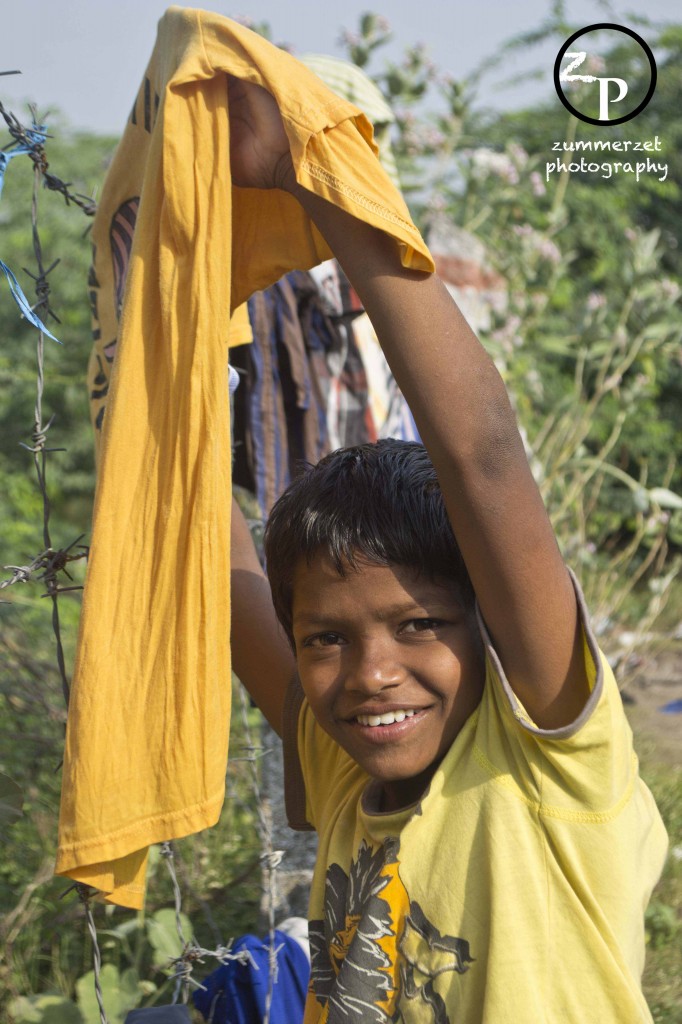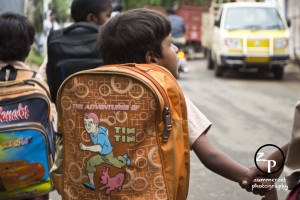
From the minute you alight from the train to the moment you leave Agra there are many waiting to greet you and they all say the same thing: ‘I have got a good price and remember it’s especially for you’.
 The very persistent old man, once we finally bartered him down from his initial high price, bundled us into his car; the luggage bumping around on the roof which, despite the size of the speed bump and the violent breaking, never seems to fall off. Once we left the car park, or it may have been the moment he turned the ignition key, the sales pitch started. Over the whole 30min journey there would be a never ending stream of things he could offer at a special price just for us. Then he would start all over again and the sites would be listed once more and a better deal would be offered. Finally we arrived at our destination and enjoyed the peace and quiet of …. Nothing; no bartering, no sales, no traffic. Later, even walking to the restaurant 15min down the road, the rickshaw man peddling beside us all the way; his price getting cheaper by the footstep!
The very persistent old man, once we finally bartered him down from his initial high price, bundled us into his car; the luggage bumping around on the roof which, despite the size of the speed bump and the violent breaking, never seems to fall off. Once we left the car park, or it may have been the moment he turned the ignition key, the sales pitch started. Over the whole 30min journey there would be a never ending stream of things he could offer at a special price just for us. Then he would start all over again and the sites would be listed once more and a better deal would be offered. Finally we arrived at our destination and enjoyed the peace and quiet of …. Nothing; no bartering, no sales, no traffic. Later, even walking to the restaurant 15min down the road, the rickshaw man peddling beside us all the way; his price getting cheaper by the footstep!
 Agra is often swamped in smog and it was when we were there, the taste in your mouth every time you take a breath. At sunrise, on the other side of the river, it loomed out of the mystical fog or smog around it. Dimly the white was shining though, breathtaking, magical as the birds moved around only to be disturbed by the persistent gardener asking for money. Later, to see it in its full splendour in full light, we entered through the South gate, which is the least busy.
Agra is often swamped in smog and it was when we were there, the taste in your mouth every time you take a breath. At sunrise, on the other side of the river, it loomed out of the mystical fog or smog around it. Dimly the white was shining though, breathtaking, magical as the birds moved around only to be disturbed by the persistent gardener asking for money. Later, to see it in its full splendour in full light, we entered through the South gate, which is the least busy.
 Then through the main gate you can see the tomb looming through the gateway. It like an ever brightening jewel the closes you get, majestic, pure, shining white, a wonder! It’s certainly worth 750 rupees although if you think you can get away with it, say your Indian: it’s only 20 rupees then! There was no queue the day we were where there but there isn’t much inside compared to the stunning exterior. The actual tombs in there are replicas of the actual tombs below but they are placed over the exact spot. The Taj was never designed to be for the King’s final resting place just, for his dearly loved wife, but it was his son who decided to place him there. His tomb is the only thing not completely symmetrical as it was all built around her tomb. From the South there are many shops and many of the ancestors of those who build the Taj Mahal still live and work here producing marble products and gifts. You have to be a hard barterer to get a good price here and if you go into one shop you are asked why you won’t go in every other shop down that lane.
Then through the main gate you can see the tomb looming through the gateway. It like an ever brightening jewel the closes you get, majestic, pure, shining white, a wonder! It’s certainly worth 750 rupees although if you think you can get away with it, say your Indian: it’s only 20 rupees then! There was no queue the day we were where there but there isn’t much inside compared to the stunning exterior. The actual tombs in there are replicas of the actual tombs below but they are placed over the exact spot. The Taj was never designed to be for the King’s final resting place just, for his dearly loved wife, but it was his son who decided to place him there. His tomb is the only thing not completely symmetrical as it was all built around her tomb. From the South there are many shops and many of the ancestors of those who build the Taj Mahal still live and work here producing marble products and gifts. You have to be a hard barterer to get a good price here and if you go into one shop you are asked why you won’t go in every other shop down that lane.
 The lavish Agra Fort is not far up river. Only 20% of the fort is open but that is large enough. It has many optical illusions, a room with precious stones and a rosewater fountain. There is also a secret passageway.
The lavish Agra Fort is not far up river. Only 20% of the fort is open but that is large enough. It has many optical illusions, a room with precious stones and a rosewater fountain. There is also a secret passageway.
‘You see baby Taj?’ the next auto rickshaw driver says after he guesses you haven’t been there yet. Actually we were after a late lunch and we agree on the guides suggestion of a certain non-veg restaurant. ‘You want veg or non-veg?’ he asks half way; ‘non-veg’ we say; he says ‘this one is veg only’; we agree veg is fine then only to arrive at a non-veg restaurant. Agra is one of the places to ignore local knowledge or advice as it will probably mislead you!
 That evening we arrive at the train station for our onward journey west to Punjab, Jaipur. Four orphaned children, aged between 3 and 6, who live on the station came and asked for money. An Indian man explains this is their home, it is all they know, and they are happy here. Our train arrived over 1 ½ hours late and it turned out to be the slow, bumpy, stopping train. Luckily our cheerful, larger-than-life driver was waiting at the other end and we sat back in the old Ambassador as it pulled away from the station with a deep rumble from its engine.
That evening we arrive at the train station for our onward journey west to Punjab, Jaipur. Four orphaned children, aged between 3 and 6, who live on the station came and asked for money. An Indian man explains this is their home, it is all they know, and they are happy here. Our train arrived over 1 ½ hours late and it turned out to be the slow, bumpy, stopping train. Luckily our cheerful, larger-than-life driver was waiting at the other end and we sat back in the old Ambassador as it pulled away from the station with a deep rumble from its engine.
















































































































































